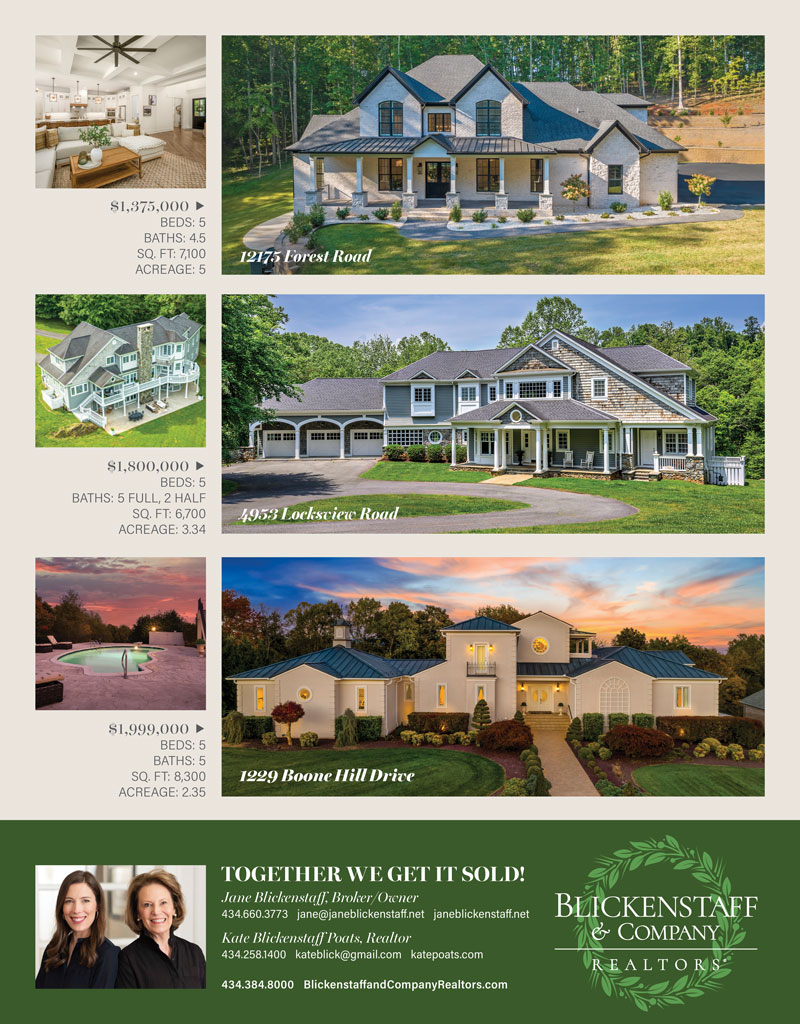3D-PRINTED HOMES

Photography by James River Media
Lynchburg-area Builder Innovating for the Future
As sci-fi as the concept of 3D-printing houses might sound, it is actually being done. 60 Minutes aired a story in October 2023 featuring ICON, an Austin, Texas, company that has “printed” several bungalows. Guided by thousands of lines of computer code, a moving robotic nozzle lays down custom-formulated concrete in a snake-like bead, roughly an inch thick per pass, to create external and internal walls. Builders account for windows, wiring and plumbing and add finishing touches that require other building materials.
Compared to traditionally-framed buildings, concrete homes are easier to heat and cool, more likely to survive storms and floods, essentially termite-proof, mold resistant, provide better sound dampening and are highly customizable — plus they can be quicker and less expensive to build.
Will this technology ever come to Central Virginia? It’s already here!
High-tech solutions
In the last two years, a Lynchburg builder has begun innovating new ways to use 3D printing.
“On-site 3D printing is only practical where temperature and humidity are naturally suitable for concrete flow and curing — and where rain interruptions are unlikely,” explains Zach Baldridge, founder and owner at KKrane. “Even a light drizzle will add unwelcome moisture to uncured beads of concrete. A downpour can absolutely destroy recently-printed walls. And the sun-facing side of a house cures differently than the shaded side.”
But how can he mitigate the risk of disruptive weather events? The answer, according to Baldridge, is indoor 3D printing of structural components. He is pioneering this technique right here in Central Virginia.
 Because this technology is state of the art, the specific methods used to create 3D-printed homes are still exclusive.
Because this technology is state of the art, the specific methods used to create 3D-printed homes are still exclusive.
Wall sections built by KKrane are fabricated in a climate-controlled warehouse – which itself was built of 1,000-pound 2′ x 8′ x 12″ 3D-printed hollow (to allow for added insulation) blocks. A robotic nozzle creates stackable wall sections from layer after layer of proprietary concrete mix. They can be curved, cornered and decoratively patterned. The concrete cures indoors, under ideal conditions that enable parts printed one day to be moved to inventory, or a job site, the next, clearing the printer for another run.
“Flow rate, curing rate, compression strength, crack resistance and long-term durability are all factors that can be varied with the mix ingredients,” Baldridge notes.
Science and art
Baldridge was schooled in art at Longwood University, but after graduation spent five years designing automation systems at Lynchburg’s Ericsson GE Mobile Communications. He got excited about home construction while designing and building his own.
Now, as an experienced builder who’s created 70 custom homes with KKrane’s sister company, True Custom, Baldridge knows well how weather can interfere with home building. “Storms impose delays on critical steps like trenching for, then pouring the footers,” he explains.
“Weather delays scramble the scheduling of framers and other subcontractors who often must be available in a choreographed sequence. Projects get delayed and costs go up. Fabricating the basic structure indoors just makes sense.”
Baldridge and his colleagues are now midway through construction of a three-bedroom, 1,800 sq. ft. home in Bedford County. Wall sections were “printed” under controlled conditions at the KKrane facility early this spring. Completion is slated for late summer, and HOME will include an exclusive look at the finished dwelling plus much more detail about its construction later this year. To learn more about concrete printing, visit kkrane.com. ✦
3-D printing, 3D-printing houses, climate-controlled warehouse, concrete homes, concrete printing, custom homes








